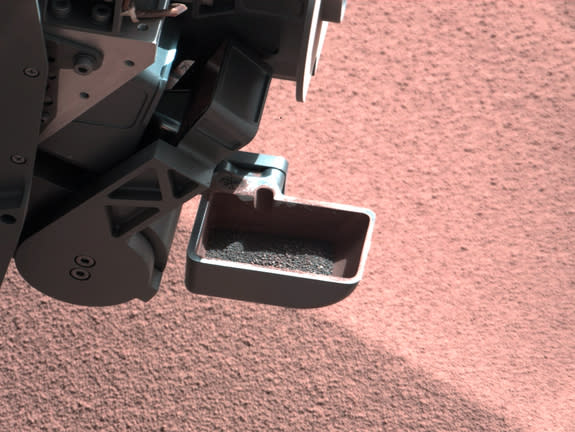 Science and Weather
Science and WeatherMars Rover mission marks 9 years exploring Red Planet

The scientists and engineers at NASA's Jet Propulsion Laboratories should be celebrating today, as it marks the ninth anniversary of their highly successful robotic rover missions on Mars.
It was January 3rd, 2004, when the first of the rovers, Spirit, bounced its way across the bottom of the Gusev crater, protected in a shell of airbags, and then rolled out from its lander to start making science history. It was followed three weeks later by its twin, Opportunity, which made a similar landing on the opposite side of the planet. Their 90-day mission was to explore their environments for evidence that there was liquid water on Mars' surface sometime in the planet's past.
This 90 days turned into years, as the two resilient rovers surpassed their designers' expectations — due to their tough constitution and with a little luck thrown in by the Martian weather — and both have made some amazing discoveries, including evidence that Mars was a much warmer, much wetter place in the past.
[ Related: More men and machines to venture into space in 2013 ]
Spirit's luck ran out in 2009, when it got stuck in very loose soil while driving around a large rock dubbed "Home Plate". Try as they might, the engineers couldn't get the plucky little rover unstuck, so they changed the rover's mission to one of a 'stationary research platform'. However, when Spirit went into low-power hibernation mode for the Martian winter (around March 30, 2010), that was the last that NASA engineers heard from it. They called an end to the mission on May 25, 2011, after one final attempt at contact.
Opportunity has continued on, though, and has operated continuously (except for much needed winter naps) until now, and it was joined by its bigger, nuclear-powered cousin, Curiosity, in August of last year.
Curiosity stole the limelight for awhile, but Opportunity is making headlines of its own still, as it explores an area that may have harboured microbial life at one time.
So, it has been a great nine years so far, and it isn't going to end anytime soon.
[ More Geekquinox: Chris Hadfield shows off Canada with tweets from space ]
Opportunity is starting to feel its age, but NASA will keep it going for as long as they can, and although Curiosity's mission is only scheduled to last 2 years, its nuclear battery will keep it going for much, much longer than that, allowing the NASA JPL staff to have the rover move on to other tasks once it has finished its work at Gale Crater. Curiosity isn't so far off from Spirit, relatively speaking. It's only a straight-shot of about 2,200 kms (about the equivalent of driving from Toronto to Denver), so perhaps once it has climbed to the summit of Mt. Sharp, it could find some work to do off to the southeast, and give Spirit a little nudge as it drives by.
These three rovers won't be the last to visit Mars, either. NASA has plans to send another one, similar to Curiosity, with a tentative launch date set in the year 2020.

